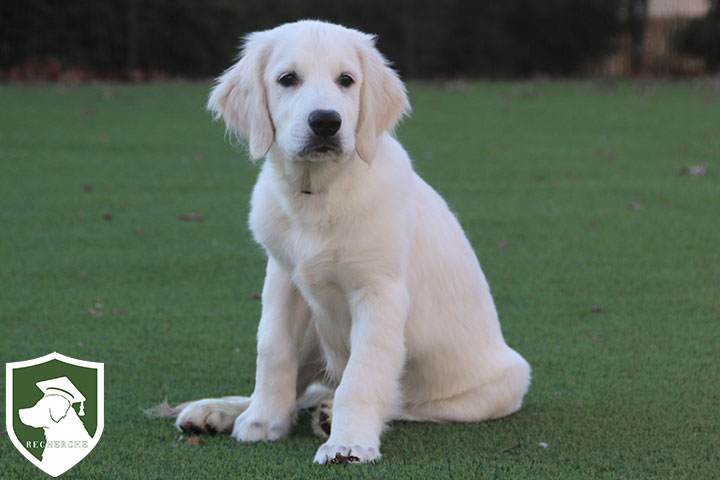The Subtle Signs: Identifying Stress and Anxiety in Your Dog Or Puppy
Highlights

Key Stress Indicators: Recognize signs of stress and anxiety in dogs, like avoidance behaviors, digestive issues, and vocal changes.
Behavioral and Physical Symptoms: Identify stress in dogs through changes in activity, sleep patterns, panting, and shaking.
Preventive Strategies: Prevent stress and anxiety with a consistent routine, positive training, and regular exercise.
Environmental Enrichment: Reduce anxiety with interactive toys, safe spaces, and gradual exposure to new experiences.
Intervention Techniques: Use professional training, aromatherapy, massage, and calming apparel to manage your dog’s anxiety.

Understanding the emotional health of dogs is a critical aspect of caring for our canine companions. Stress and anxiety in dogs often manifest in behaviors and signs that may initially appear normal or be easily overlooked. As responsible pet owners, it is essential to identify these subtle signals to address any underlying issues proactively. By learning to read the body language and behavioral cues that dogs display, we can create a more supportive and stress-free environment for them.
Recognizing the signs of stress and anxiety in dogs requires attention to detail and a knowledge of canine behavior. Behaviors such as avoidance, digestive issues, and changes in vocalization can be indicators that a dog is experiencing stress. Identifying these signs early can prevent more serious behavioral problems and increase the overall well-being of the dog. By familiarizing themselves with these indicators, owners can take the necessary steps to alleviate their pet’s discomfort, whether through environmental changes, training, or seeking professional help.
Recognizing Stress in Dogs
Recognizing stress in dogs is critical for their well-being. By interpreting behavioral changes, physical symptoms, and auditory signals, one can identify and address their stress effectively.
Behavioral Changes
Dogs exhibit a range of behaviors when stressed that differentiate from their normal conduct. These include:
- Avoidance behaviors, such as turning away or evading interaction.
- Changes in activity levels, either a marked increase or decrease.
- Disruption in sleep patterns, like sleeping more or less than usual.
- Unexpected aggression or submission in interactions with others.
Physical Symptoms
Stress in dogs often manifests through physical signs including:
- Panting and salivating more than is typical for the level of physical activity or ambient temperature.
- Showing whale eye (whites of the eyes visible), a sign of anxiety.
- Shaking or trembling that isn’t related to the environmental temperature.
- Digestive issues such as diarrhea or constipation without a dietary cause.
Auditory and Vocal Signals
Vocalizations are direct indicators of a dog’s emotional state. Signs of stress are:
- Frequent and uncharacteristic whining or barking.
- Yawning, which, beyond indicating tiredness, can also signify stress.
High-pitched barking, differing from their regular tone or pattern.
Understanding Anxiety in Dogs

Recognizing and addressing anxiety in dogs is crucial for their overall well-being. It’s essential to understand what triggers this condition and the long-term impact it can have on a dog’s health.
Common Triggers
- New Environments: Dogs can become anxious when exposed to unfamiliar settings or changes in their usual environment.
- Separation: Many dogs experience anxiety when separated from their owners, known as separation anxiety.
- Loud Noises: Sounds such as fireworks or thunderstorms commonly trigger fear and anxiety in dogs.
- Prior Negative Experiences: Traumatic past events can lead to persistent anxiety.
Long-Term Effects
- Behavioral Issues: Chronic anxiety may lead to destructive behaviors, aggression, or excessive barking.
- Health Problems: Prolonged stress can compromise a dog’s immune system and lead to health issues.
Prevention Strategies
Preventative measures are essential in mitigating stress and anxiety in dogs. They can significantly improve a dog’s quality of life and prevent behavioral issues.
Stress Management
Effective stress management is crucial in preventing anxiety in dogs. Owners should establish a consistent daily routine, as dogs thrive on predictability. Scheduled feeding times, walks, and play sessions can provide a sense of security. Training should be positive and reward-based, avoiding any punitive methods that could induce stress. Regular exercise is paramount as it helps to reduce excess energy that can lead to anxiety. A dog that is physically active is less likely to display anxious behavior.
- Routine: Establish a fixed schedule for feeding, walks, and playtime.
- Positive Training: Use reward-based methods for behavior modification.
- Regular Exercise: Engage the dog in daily physical activities suitable for its breed and age.
Environmental Enrichment
Creating an enriching environment can help prevent anxiety by providing mental stimulation and reducing boredom. Interactive toys such as puzzle feeders can keep a dog occupied and mentally engaged. Safe spaces, like a dedicated bed or a crate, allow dogs to have a sanctuary where they can retreat if overwhelmed. Introducing new experiences in a controlled and positive manner can help increase a dog’s confidence and reduce its anxiety in unfamiliar situations or environments.
- Interactive Toys: Utilize puzzle feeders and toys that challenge the dog’s mind.
- Safe Spaces: Designate an area where the dog can feel secure and undisturbed.
- Controlled Exposure: Gradually introduce the dog to new experiences while ensuring a positive outcome.
Intervention Techniques

Recognizing the signs of stress and anxiety in dogs is only the first step; effective intervention is crucial for a dog’s well-being. There are specific techniques that can be employed to help manage and reduce stress levels in dogs.
Professional Training
Professional dog trainers can identify signs of anxiety and develop structured programs to address the behavior. They utilize positive reinforcement to teach dogs coping mechanisms. Behavioral modification might include:
- Controlled exposure to stressors
- Signal training to encourage calm behavior
- Socialization exercises to reduce fear of other dogs or humans

Calming Therapies
Several calming therapies can soothe anxious dogs, often used in tandem with training. These may include:
- Aromatherapy: using scents like lavender to create a calming environment
- Massage: to relieve muscle tension and reduce stress
- Calming apparel: such as anxiety wraps or thunder shirts that apply gentle, constant pressure to the dog’s body
The implementation of these techniques requires patience and consistency, as changes in behavior may occur gradually. Owners should consult a veterinarian or a professional dog trainer to determine the most suitable approach for their pets.
Supporting Your Dog's Well-Being
Supporting a dog’s well-being is crucial in mitigating stress and anxiety. This involves regular health monitoring and providing a diet that meets their nutritional needs.
Regular Check-Ups
Regular check-ups are essential in maintaining a dog’s health. They allow veterinarians to detect and address any potential health issues early on. During these visits, the vet can assess the dog’s weight, coat, eyes, ears, and dental health to ensure they are in good condition. Additionally, vaccinations and parasite control are managed to prevent common diseases and infections.
Balanced Nutrition
A balanced diet is fundamental for a dog’s physical and mental well-being. The diet should be appropriate for the dog’s age, breed, and activity level. It’s important to provide:
- Proteins: for muscle maintenance and repair.
- Fats: for energy and support of healthy skin and coat.
- Carbohydrates: for a readily available energy source.
- Vitamins and Minerals: for overall health and to support the immune system.
Feeding the right amount prevents obesity, which is a common stressor and health concern in dogs. Owners should also have access to fresh water at all times to keep their pet well-hydrated.
Frequently Asked Questions
Recognizing stress and anxiety in dogs requires an understanding of their typical behaviors and noting significant deviations. This section addresses common questions regarding the identification and management of canine stress and anxiety.
Anxiety in dogs often manifests as changes in body language and behavior. Indicators may include excessive panting, pacing, trembling, or increased vigilance. House-trained dogs might also have accidents indoors when feeling anxious.
Anxious behavior is characterized by signs such as persistent barking or whining without a clear trigger, avoidance, and hiding. In contrast, excitable behavior is usually triggered by positive stimuli and is associated with wagging tails, alert ears, and playful actions without signs of stress.
To reduce a dog’s stress at night, establish a calming routine before bed, create a cozy and safe sleeping environment, and provide suitable toys or puzzle feeders to help them relax. Consultation with a veterinarian or a certified behaviorist may also be beneficial for persistent issues.
Sudden stress responses in dogs can be triggered by loud noises, such as fireworks or thunderstorms, unfamiliar environments, new people or animals, abrupt changes in routine, or traumatic events. Observing when a dog becomes stressed can help identify specific triggers.
While stress itself is typically non-lethal, chronic severe stress can compromise a dog’s health, leading to suppressed immune function and exacerbating existing health problems. This can indirectly contribute to a shortened lifespan if not properly managed.
Effective management of high-anxiety in dogs involves consistent training and desensitization exercises, the establishment of a predictable routine, and the creation of a safe space. Additionally, professional interventions such as behavioral therapy and potentially prescribed medications may be used under veterinary guidance.

